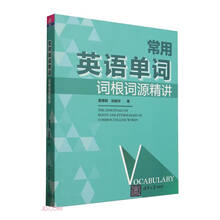2 Linda B.Buck 琳达·B·巴克<br> 琳达·B·巴克,1947年1月29日主子美国西雅图。1975年她获得了美国华盛顿大学的心理学和微生物学学工学位,1980年在美国得克萨斯大学西南医学中心取得免疫学博工学位后,她曾于1980年至1984年间在美国哥伦比亚大学进行博士后研究。巴克现任职于美国西雅图的弗雷德,哈钦森癌症研究中心,是美国国家科学院院士。巴克的研究室除了研究嗅觉外,还发现了位于犁鼻(vomeronasal)器官大约有140种的费洛蒙接受器,这些是专司侦测费洛蒙的嗅觉结构。此外,巴克的研究室对于老化及长生不老也很感兴趣,他们认为也许有一群细胞透过中央控管,影响全身其他细胞的老化,他们正对线虫展开全面的研究。由于我们对这种虫的每一个细胞了如指掌,希望能从中找出,二长这些线虫寿命的化学物质,说不定将来这项结果也可以应用在人类上。<br> She was born in 1947 in Seattle, Washington, a city surrounded by mountains, forests, and the sea.<br> In 1980, she moved to Columbia University in New York City to do postdoctoral work in immunology with Benvenuto Pernis.<br> While studying a neuropeptide gene expressed in neuron number R15, she discovered that the gene was also expressed in some other neurons, but that its primary transcript was alternatively spliced in different neurons to give different polyproteins. The two polyproteins could generate two different combinations of peptides in different neurons, suggesting a way to produce physiological or behavioral programs with partially overlapping components.<br> As she was nearing the end of her Aplysia project, she read a paper that changed her life. It was a 1985 publication from Sol Snyder's group that discussed potential mechanisms underlying odor detection. This was the first time she had ever thought about olfaetion and she was fascinated. How could humans and other mammals detect 10,000 or more odorous chemicals, and how could nearly identical chemicals generate different odor perceptions? In her mind, this was a monumental puzzle and an unparalleled diversity problem. It was obvious to her that the first step to solving the puzzle was to determine how odorants are initially detected in the nose.This meant finding odorant receptors, a class of molecules that had been proposed to exist, but had not been found. She decided that this was what she had to do as soon as her neuropeptide work was completed.<br> In 1988, she embarked on a search for odorant receptors, staying on in Richard's lab for this purpose. In a recent commentary in the journal Cell,she described what was known about odor detection at that time and the approaches that she tried in the quest to find the elusive odorant receptors.<br> In 1991, she departed for Boston to be an assistant professor in the Neurobiology Department at Harvard Medical School. There, she was immersed in an environment in which she could broaden her understanding of the nervous system. She received excellent support from her chairman, Gerry Fischbach, as she set up her lab. She also developed many excellent colleagues, including David Hubel, whose pioneering studies of the visual system with Torsten Wiesel, for which they received a Nobel Prize in 1981,had always been an inspiration to her. In 1994, she became an investigator of the Howard Hughes Medical Institute, which has generously supported their work for the past eleven years. Over the next decade,she remained at Harvard, gradually rising through the ranks to become associate and then full professor. In 1994,'she met Roger Brent, a marvelous intellect and fellow scientist who has been her partner and an important part of her life ever since.<br> The discovery of odorant receptors had explained how the olfactory system detects odorants.Her next goal was to learn how signals from thosereceptors are organized in the brain to generate diverse odor perceptions. She was joined in this endeavor by a series of excellent students andpostdoctoral fellows. The discoveries on the organization of the olfactory system that were cited by theNobel Foundation were made over a period of tenyears, during which she was a faculty member atHarvard.<br> In 2002, she returned to Seattle to be a memberof the Division of Basic Sciences at Fred HutchinsonCancer Research Center and Affiliate Professor ofPhysiology and Biophysics at the University of Washington. She had always intended to someday returnto the West Coast and had already stayed longer inBoston than she had anticipated. When Mark Groudine, then Director of the Basic Sciences Division at Fred Hutchinson, offered her a faculty position there, she gladly accepted. The Hutchinson Center had a reputation for cutting edge science as well as a high level of collegiality, both of which were important to her. In addition, by moving to Seattle,she would be closer to her partner, Roger, who lived in Berkeley, and to her family and friends in Seattle.<br> In Seattle, they are continuing to explore the mechanisms underlying odor perception as well as the means by which pheromones elicit instinctive behaviors. They have also become interested in the neural circuits that underlie innate behaviors and basic drives, such as fear, appetite, and reproduction. They are currently developing molecular techniques to uncover those circuits and to define their composite neurons and the genes they express. In a different vein, they have developed a high throughput approach in which they are using chemical libraries to identify genes that control aging and lifespan, their chief interest being whether there might be a central mechanism that.determines lifespan and regulates the aging of cells throughout the body.<br> Looking back over her life. she is struck by the good fortune she has had to be scientist. Very few in this world have the opportunity to do everyday what they love to do, as she has. She has had wonderful mentors, colleagues, and students with whom to explore what fascinates her and have enjoyed both challenges and discoveries. She is grateful for all of these things and looks forward to learning what Nature will next reveal to them.<br> As a woman in science, she sincerely hopes that her receiving a Nobel Prize will send a message to young women everywhere that the doors are open to them and that they should follow their dreams.<br> ……
展开










